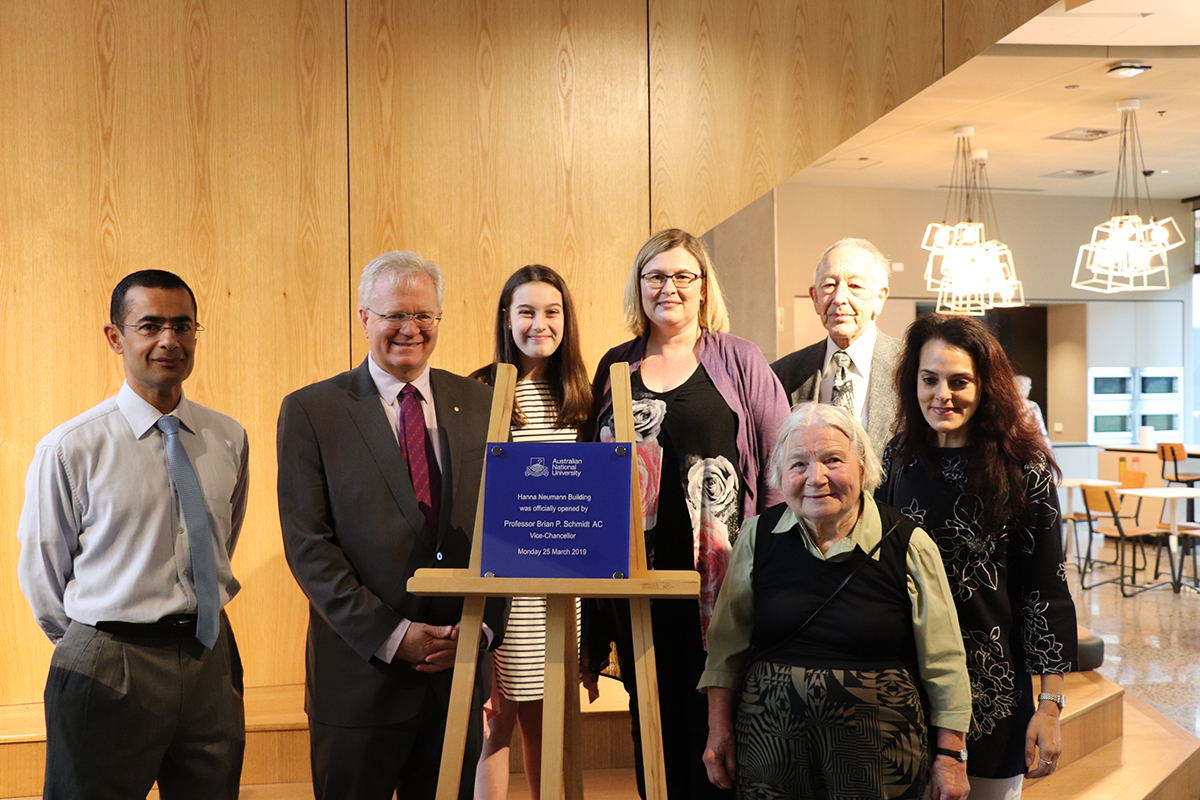Keeping Hanna Neumann’s legacy alive: the new HN building



The cryptographic patterns hidden within the privacy films and the external blades are one of the most distinctive aspects of the new Hanna Neumann Building, home of the Mathematical Sciences Institute, the Research School of Computer Science and the Statistical Consulting Unit at the ANU.
The unique and first of it’s kind cross discipline facility was officially opened on the 25 March 2019 by Vice-Chancellor Professor Brian Schmidt, Professor Elanor Huntington, Dean of the College of Engineering and Computer Science (CECS), Professor Kiaran Kirk, Dean of the College of Systems and Society and members of the Hanna Neumann family. This modern five story building exemplifies the work of Professor Hanna Neumann, a beacon of both intellectual prowess and teaching excellence in mathematics and computer science.
Born in Berlin on 12 February 1914, Hanna Neumann (nee von Caemmerer) commenced her university studies at the University of Berlin in 1932 and completed her studies in 1936 with distinction in the Staatsexamen (German Examination) in Mathematics and Physics.
She began studying for her PhD at the University of Gottingen in 1938 under the supervision of Helmut Hasse. She moved to Cardiff, England to join her fiancé Bernhard Neumann in 1938, where they married soon after. In 1940, Hanna and her husband moved to Oxford where she completed her DPhil under Olga Taussky-Todd, an Austrian and later Czech-American mathematician, famous for writing more than 300 research papers in algebraic number theory, integral matrices, and matrices in algebra and analysis.
Hanna and Bernhard moved to Australia in 1963 to take up academic positions at the ANU, where she became the first female Chair at the ANU and the first female Professor of Mathematics in Australia. Her contributions to the modern algebraic theory of groups, a field of relevance also to both computer science and cryptography have been pivotal to the expansion of the field.
As Head of the Department of Pure Mathematics, she contributed greatly to mathematical education in Australia, as well as building a highly active research school. She was an inspiring leader, who paved the way for future female mathematicians in Australia.
Her vision, kindness and the joy she found in her mathematical work are just some of the qualities we hope this building inspires in its students and staff for years to come.
